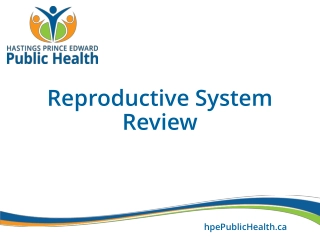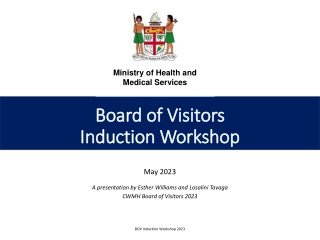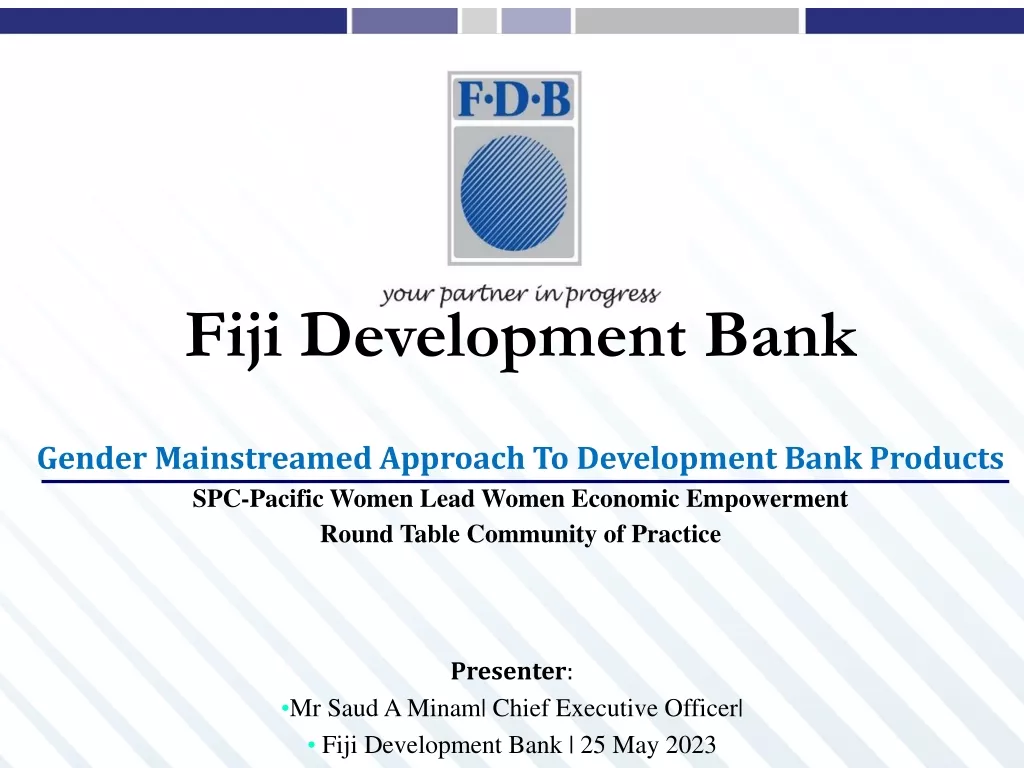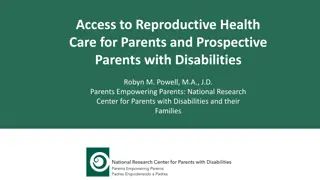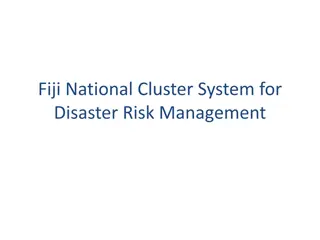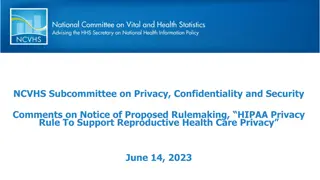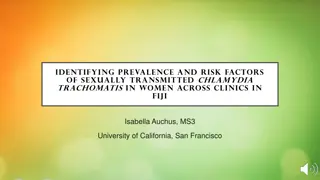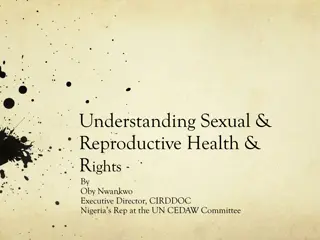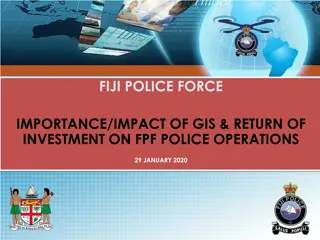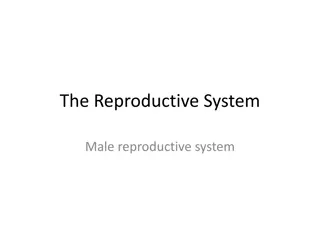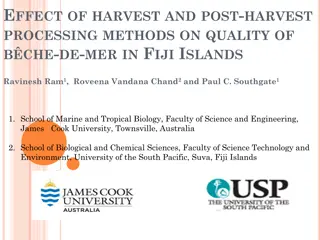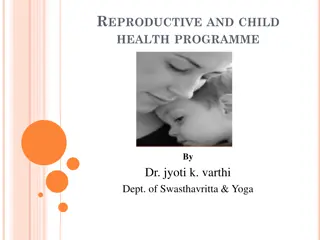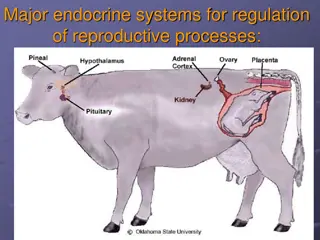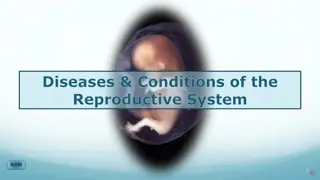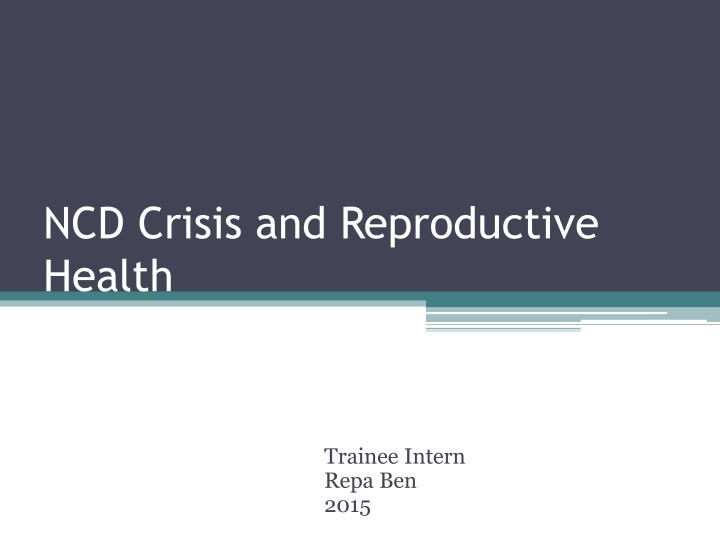
Reproductive Health Priorities and Strategies in Fiji
Addressing the pressing reproductive health issues in Fiji and the importance of access to reproductive health services for national development. Explore how the non-communicable disease crisis impacts reproductive health, focusing on components, global strategies, and priorities such as family planning, maternal health, STI prevention, and more. Delve into the WHO's global reproductive health strategy and targets for improving care and services.
Download Presentation

Please find below an Image/Link to download the presentation.
The content on the website is provided AS IS for your information and personal use only. It may not be sold, licensed, or shared on other websites without obtaining consent from the author. If you encounter any issues during the download, it is possible that the publisher has removed the file from their server.
You are allowed to download the files provided on this website for personal or commercial use, subject to the condition that they are used lawfully. All files are the property of their respective owners.
The content on the website is provided AS IS for your information and personal use only. It may not be sold, licensed, or shared on other websites without obtaining consent from the author.
E N D
Presentation Transcript
NCD Crisis and Reproductive Health Trainee Intern Repa Ben 2015
Aims What are the pressing RH issues in Fiji ? Why is access to RH important to the development of the nation? How does NCD crisis affect RH?
An Introduction Reproductive Health A state of complete physical mental and social well being and not merely the absence of disease or infirmity, in all matters relating to the reproductive system and its functions.
Components of Reproductive Health It has 8 core components: 1. Family Planning 2. Maternal Health : ANC, Delivery, PNC 3. AHD-Teen Pregnancy 4. RTI/STI/HIV 5. Abortion & its Complications 6. RT Cancers 7. Child Health 8. Gender Equity, Empowerment &Reproductive Rights
The 8 Millennium Development Goals? 1. Eradicate extreme poverty & hunger 2. Achieve Universal Primary Education 3. Promote gender equality & empower women 4. Reduce child Mortality 5. Improve maternal health 6. Combat HIV/AIDS , Malaria & other diseases 7. Ensure environmental sustainability 8. Develop a global partnership for development
Global Reproductive Health Strategy. Policy to strengthen health systems Existence of a task force Inclusion of reproductive health within proposals to the global fund Human resources assessment Training needs Improving data for quality of sexual and reproductive health care Standards guidelines for service delivery Strengthening referral systems.
WHO Global Reproductive Health Strategy Targets the five priority aspects of reproductive health Improve antenatal/delivery/postpartum/newborn care Provide high quality family planning services Eliminate unsafe abortion Combats STI/RTI s including HIV, cervical cancer and other morbidities Promote sexual health ( include adolescence)
Reproductive Health Priorities Crude birth rate -21/1000 Contraceptive Prevalence Rate -45% Level of unmet need for family planning remains relatively high High rates of STI s-high infertility rate Adolescent Fertility Rate slightly decreased in the last 5 years-50/1000 Birth to teenage mothers account for 10% of all births
Maternal morbidity data high & largely linked to high incidence of diabetes ,other NCD s in pregnancies, premature birth , anemia Maternal mortality ratio-30-40 per 100000 live births in the past decade Neonatal mortality rate-15/1000 births (prematurity, severe infection) Infant mortality rate-20/1000 live births
Abortion not legal- high rates of case presentation Cervical cancer- incidence-51.3/100000 WHO data published in April 2011 Cervical Cancer Deaths in Fiji reached 66 or 1.61% of total deaths (Law I, Fong JJ, Buadromo EM, et al. 2004-2007 - Pap smear coverage -8.0% )
NCDs and Female Motality NCD s kill 50000 women every day (>1000 /hr - CVD) According to the 2002 STEPS Survey : Overweight (Females)-31.5% Obese (Females)-26.4 % Hypertension -10.9% Fasting blood glucose (>6.1)-15.2%
Obesity and Menstrual Problems Polycystic Ovarian Syndrome as a syndrome of obesity, hirsuitism, anovulation and infertility, associated with enlarged and polycystic ovaries - Weight loss - up to 80% improvement in menstrual function, hirsuitism was reduced by 40% in the women
Obesity and Fertility Hamilton-Fairley et al. -studied the risk of miscarriage and associated BMI ,BMI( 19-24.9),- 11% miscarriage, BMI (25-27.9) -14 %,BMI >28), 15% .
Obesity and Pregnancy Maternal Obesity (WHO) -BMI ->30 Maternal risk -30 39.9 -increased risk of gestational diabetes mellitus(x3), chronic hypertension,preeclampsia(inc.50%),thromboemb olism - BMI of less than 30. Intrapartum -induction of labor, slow labour progression ,emergency caesarean section, primary postpartum hemorrhage Anasthesia & surgical risk
Fetal risk - increased risk of prematurity,stillbirth, congenital anomalies(neural tube defects double), macrosomia, birth injury and childhood obesity
Obesity and Cancer Increases rate of : endometrial carcinoma (3 x -9.5-22.5 kg overweight, to x10 - excess of weight > 22.5 kg) Post menopausal breast cancer Cervical cancer double risk Other cancers-esophagus, pancreas,colon,kidney,thyroid,gall bladder (dec. of BMI by 1 avoid 100000 new cases)
Solutions Empowering women to take ownership of their own health Risk factors -modifiable Increase coverage+quality care-prenatal to post natal care Readily available Paps smear services Strengthen delivery of comprehensive approach to contraception Rebuild village +community health networks Strength the use of data to monitor &manage performance
References: Steps survey 2002 Anon, (2015). [online] Available at: http://bmb.oxfordjournals.org/content/53/2/341.full.pdf [Accessed 18 Jun. 2015]. Anon, (2015). [online] Available at: http://www.health.gov.fj/wp-content/uploads/2014/09/1_Reproductive-Health- Policy.pdf [Accessed 18 Jun. 2015]. Aogd.org, (2015). [online] Available at: http://aogd.org/AOGD-Bulletin-January-2015.pdf#page=6 [Accessed 18 Jun. 2015]. Boyles, S. (2015). Obesity Linked to Infertility in Women. [online] WebMD. Available at: http://www.webmd.com/infertility-and-reproduction/news/20071211/obesity-linked-to-infertility-in-women [Accessed 18 Jun. 2015]. Cancer.org, (2015). What are the risk factors for cervical cancer?. [online] Available at: http://www.cancer.org/cancer/cervicalcancer/detailedguide/cervical-cancer-risk-factors [Accessed 18 Jun. 2015]. Global Health Hub: news and blogosphere aggregator, (2011). Women: A Powerful Solution to the NCD Crisis. [online] Available at: http://www.globalhealthhub.org/2011/08/12/women-a-powerful-solution-to-the-ncd-crisis/ [Accessed 18 Jun. 2015]. ICPD 1994. (2015). [online] Available at: http://www.unfpa.org/sites/default/files/event-pdf/PoA_en.pdf [Accessed 18 Jun. 2015]. Law, I., Fong, J., Buadromo, E., Samuela, J., Patel, M., Garland, S., Mulholland, E. and Russell, F. (2013). The high burden of cervical cancer in Fiji, 2004?07. Sexual Health, 10(2), p.171. Roura, L. and Arulkumaran, S. (2015). Facing the noncommunicable disease (NCD) global epidemic The battle of prevention starts in utero The FIGO challenge. Best Practice & Research Clinical Obstetrics & Gynaecology, 29(1), pp.5- 14. World Life Expectancy, (2015). Cervical Cancer in Fiji. [online] Available at: http://www.worldlifeexpectancy.com/fiji- cervical-cancer [Accessed 18 Jun. 2015

